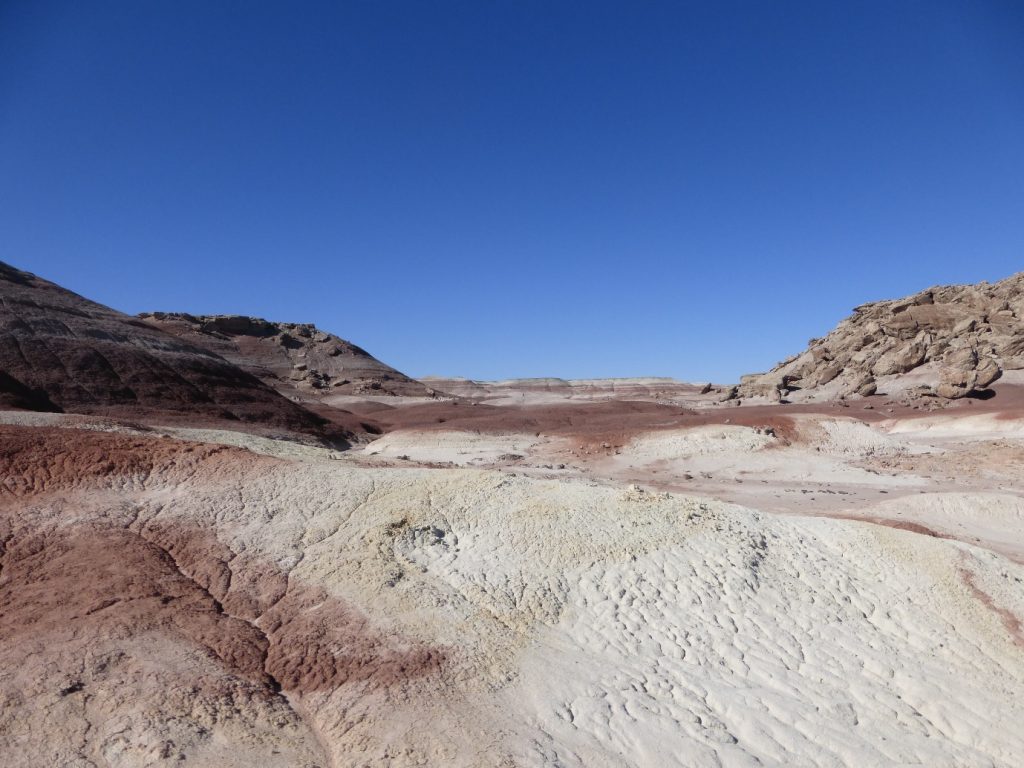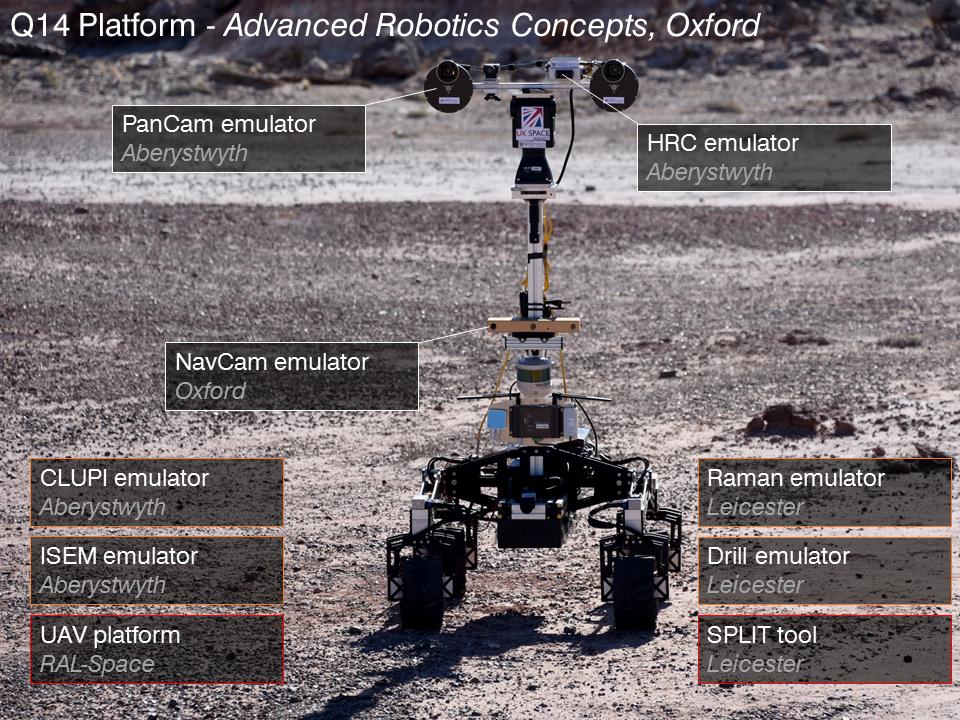This article was contributed by Dr Jennifer Harris from Birkbeck’s Department of Earth and Planetary Sciences
Over the last week of October and first week of November 2016 a group of UK-based scientists and engineers carried out the first (of hopefully many) mission simulations of the ExoMars rover.

The Utah desert and site of the MURFI field trail (image credit: Jennifer Harris)
The ExoMars Rover
The ExoMars rover is the second half of the ESA/Roscosmos ExoMars programme to investigate the surface and atmospheric composition of Mars, looking for signs of life. The first half, the Trace Gas Orbiter, successfully reached Mars in November 2016 and is now preparing to begin its mission. The second half, the rover, is due to be launched in 2020 and will be going to some of the oldest terrains on Mars. There it will drill up to two metres into the surface to look for any evidence of ancient life.
Before we send over €1 billion worth of technology all the way to Mars, trials using prototypes of the rover and its instruments are necessary to ensure useful and correct data will be returned, and that the scientists who will be involved in the mission operations know how to interpret these data and use them to guide the rover in its exploration. Numerous UK scientists, including myself and some of my colleagues in the Department of Earth and Planetary Science, are involved in the ExoMars program and were subsequently thrilled to take part in MURFI, a UKSA-funded field simulation of the ExoMars rover mission.
MURFI – the Mars Utah Rover Field Investigation
MURFI was a collaboration between a number of institutions including RAL Space, UCL, Birkbeck, University of Leicester, University of Oxford, Open University, University of St Andrews, Aberystwyth University, Natural History Museum and Joanneum Research in Austria. With over 60 people involved two core groups were formed. One group set up camp in the Utah desert near to the Mars Desert Research Station and the Canadian Space Agency team (who were conducting their own rover field trials at the same time). With them were the rover supplied by the robotics group at the University of Oxford and various prototypes of the instruments that are currently being built for the ExoMars rover. It was this field team who would be operating the rover and instruments, collecting the data requested. A second group gathered in the Satellite Catapult Centre in Harwell where a Mission Operations Centre (MOC) was established. This MOC would command the rover, sending detailed daily instructions to the field team.

MURFI Mission Operations Centre in full swing (Image credit: Pete Grindrod)
Mission Operations – a daily race
Each day the mission operations team downloaded the data (primarily images) collected by the field team the previous day, analysed these and made a decision as to what we wanted the rover to do next. This was a constant race against the clock as these commands had to be sent to Utah by 2pm UK time, 7am Utah time, to give them a full day to complete our requests. Our primary aim in these decisions each day was to identify a patch of ground to drill into that is (a) drillable with the equipment available and (b) likely to hold evidence of past life. This will also be one of the major goals of the ExoMars rover operations team. Identifying the type of geological environment you are in when all you have are a handful of images to look at is significantly harder than if you are able to walk around the area yourself. However, it is exactly this challenge that we face with robotic exploration and thus learning this skill through field trials such as MURFI is a vital part of mission preparation.
Trial outcomes
The final pieces of data are still being analysed and mission debriefing is still to come but it’s safe to say everyone involved learnt a lot about being part of a rover driving team, and in the case of some, being part of a rover! With approximately five years to go before the ExoMars rover begins its mission this was an important step towards ensuring the UK’s planetary science community are prepared for the heavy work of searching for life on Mars.

MURFI rover and instruments (image credit: Pete Grindrod/MURFI field team)
Further details
The BBC came to visit us at Harwell one day to film a section for the Sky at Night which can be found at the end of this episode.
More in depth details of the field trial rationale and daily activities can be found at the MURFI blog and via the #MURFI hashtag on twitter.
